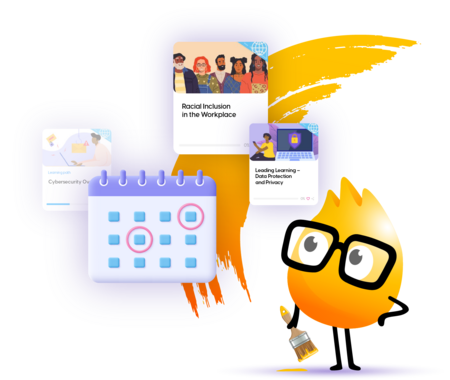Spring Training: Three Ways L&D Can Learn from Baseball

Spring Training gives young players the opportunity to show their stuff and maybe secure a spot on the starting roster and gives seasoned players time to practice and prepare for the long, competitive season ahead. Even better, it gives fans the chance to cheer their favorite teams while catching some rays – but in a much more intimate setting (and for less money) than going to a big-time MLB stadium.
What does Spring Training have to do with corporate training?
Plenty! It’s an ideal metaphor for preparing for success, for testing ideas out before taking them primetime, and for building team cohesiveness in advance of competition.
Learning pros can indeed take some good lessons from the concept of Spring Training. It’s still early in the year; we’re not even all the way through the first quarter. So, there’s still time to tweak things that may not be working well and still end up with a very successful 2020 overall. Sure, you did your initial planning at the end of 2019 and maybe a bit into January, but now you’re seeing how those plans are playing out.
Here are three ways for L&D to step up to the plate and learn from the pros in baseball:
1. The game plan may change during the game.
Unlike football and even basketball, baseball games can be extremely hard to plan. The pitcher can throw a killer forkball, but it still gets hit into the stands. A batter can take a swift swing, but it’s still an out.
Your learning programs can feel similar. You created a course that you thought everyone would love, but hardly anyone’s completing it. You launched a training program to drive sales performance, but now the sales managers are giving you grief that it’s not working.
Ok, time to step back and reassess. Again, it’s still early in the year, so don’t dig in your heels and double-down on missteps. Those outcomes will only accumulate over the course of the year. Instead, just like a winning baseball coach, go back to the original strategy and identify its weaknesses – even in the third inning. Throw the changeup when you’d initially thought fastball. Maybe longer learning paths for salespeople wasn’t the best approach and you should’ve gone for one-off, micro-learning courses. Go for it. There’s no shame in change. The real failure would be to follow a plan that’s carved in stone, even when the scoreboard indicates you should go a different direction.
2. Test it out before you roll it out.
Just like in Spring Training, you can experiment with new ideas before you take them into the regular season, as it were. Setting up pilot programs for small subsets of learner groups is a great way to test a learning program’s viability. Work with department heads to select a cross-section of learners to take the training and provide feedback. Be sure to set a baseline at the beginning, so that you can accurately record results. These will be different for every organization, so we can’t get into what your specific metrics should be. The important thing is to know what you’re tracking before you start, so that success (whatever that means for you) is measurable. Then, you can roll the program out to a wider group – only after its proven to be ready for primetime.
3. Winning takes a team.
In business and in baseball, there will always be superstars. And, yes, these leaders may be able to take the weight of a win or two on their shoulders, but they can’t be expected to carry an entire season. For your training department to be successful, you must have support from other areas of the company.
Reach out to department heads for insight on what their teams need. Ask internal experts to help create original content to supplement the off-the-shelf courses in your library. It’s also very important to have execs and managers champion the importance of training to motivate and inspire learners to stay on top of required courses.





